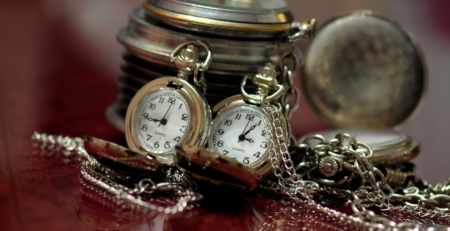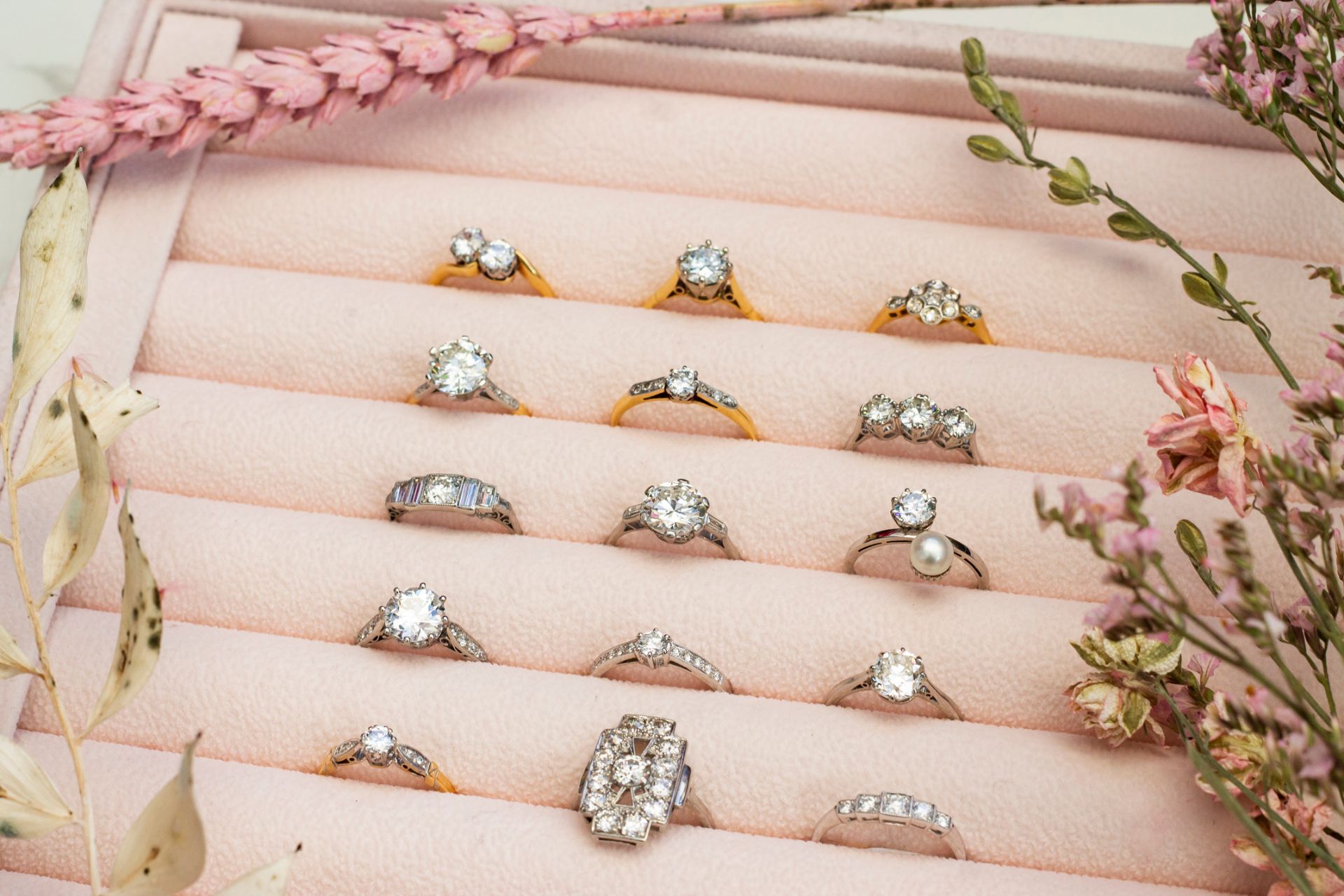
The History of Engagement Rings & How to Choose an Antique Ring
Jess2025-09-04T13:14:54+00:00Engagement rings have carried the promise of love for centuries, from Roman iron bands to the dazzling diamond solitaires we know today. But for many couples, an antique engagement ring holds a deeper magic — a one-of-a-kind piece, rich with history, that tells its own love story.
In this guide, we’ll explore the fascinating history of engagement rings, uncover the most popular antique and vintage styles, and share expert tips on choosing the perfect heirloom for your forever moment.
A brief history of engagement rings
The tradition of giving a ring as a promise of marriage dates back over two thousand years. In ancient Rome, simple bands of iron or gold were worn as a visible symbol of betrothal. By the Middle Ages, rings set with coloured gemstones were popular across Europe, with rubies signifying passion and sapphires symbolising loyalty.
In 1477, Archduke Maximilian of Austria gave Mary of Burgundy a diamond ring, one of the first recorded diamond engagement rings, sparking a trend among European aristocracy.
By the Victorian era (1837–1901), designs became ornate and symbolic, often featuring seed pearls, clusters of old-cut diamonds, or romantic motifs such as hearts and flowers. The Edwardian period (1901–1910) brought platinum into fashion, with delicate lace-like filigree and milgrain detail. Then came the glamour of the Art Deco era (1920s–1930s), with bold, geometric lines, calibre-cut sapphires, and dazzling diamonds.
Each era left its mark, giving us the rich variety of antique and vintage engagement rings we treasure today.
Why Choose an Antique Engagement Ring?
Unique Character – No two rings are alike; each has its own story and personality.
Craftsmanship – Antique rings were often handmade, with techniques rarely seen today.
Sustainability – Choosing antique jewellery means no new mining, making it an environmentally conscious choice.
Romance & Storytelling – An heirloom ring carries history as well as love.
Styles of Antique Engagement Rings
Victorian (1837–1901)
The Victorian era was an age of symbolism and romance. Rings often featured old mine-cut diamonds alongside colourful gemstones like rubies, emeralds, and sapphires. Designs included:
Cluster rings — diamonds or gemstones arranged like a flower, symbolising love in bloom.
Serpent motifs — a snake biting its tail represented eternal love; Queen Victoria herself wore one.
Mixed gemstones — turquoise, garnet, and seed pearls were popular for their meanings.
Metals: Mostly 18ct yellow or rose gold.
Feel: Warm, sentimental, and full of hidden meanings.
Edwardian Engagement Rings (1901–1910)
Edwardian jewellers embraced platinum, allowing for intricate, lace-like designs that were strong yet delicate.
Filigree work — fine, lace-like wire patterns.
Milgrain detail — tiny beaded edges that give a soft sparkle.
Floral and garland motifs — romantic and light, echoing high-society elegance.
Stones: Old European-cut diamonds, sometimes accented with gemstones.
Feel: Airy, refined, and feminine.
Art Deco Engagement Rings (1920s–1930s)
The roaring twenties brought bold glamour and geometric precision.
Geometric settings — octagons, squares, and stepped designs.
Calibre-cut stones — sapphires, rubies, and emeralds cut to fit precisely around diamonds.
Contrasting colours — diamonds set against onyx or vivid gems.
Metals: Platinum and white gold dominated.
Feel: Bold, modernist, with strong symmetry and drama.
Retro & Mid-Century Engagement Rings (1940s–1950s)
After the Art Deco era, designs softened but kept a sense of luxury.
Classic solitaires — one diamond as the star, often with a high setting.
Two-stone rings (Toi et Moi) — symbolising two souls united.
Ballerina rings — a central diamond surrounded by tapered baguettes, creating a tutu-like halo.
Metals: Yellow and rose gold returned during wartime rationing, later shifting back to white metals.
Feel: Glamorous, optimistic, and timeless.
Engagement ring eras at a glance
| Era | Date Range | Metals | Gemstones | Style Features |
|---|---|---|---|---|
| Victorian | 1837–1901 | 18ct Yellow & Rose Gold | Diamonds, Pearls, Turquoise | Clusters, Serpents, Romantic Motifs |
| Edwardian | 1901–1910 | Platinum | Diamonds, Sapphires | Filigree, Milgrain, Floral Garlands |
| Art Deco | 1920s–1930s | Platinum, White Gold | Diamonds, Rubies, Emeralds | Geometric, Symmetry, Bold Colours |
| Retro / Mid-Century | 1940s–1950s | Yellow & Rose Gold | Diamonds | Solitaires, Toi et Moi, Ballerina Halos |
How to Choose the Perfect Antique Ring
Decide on an Era
Think about whether you prefer the romance of Victorian, the elegance of Edwardian, or the drama of Art Deco.Pick the Gemstone
Diamonds remain the most popular choice, but sapphires, rubies, and emeralds all make stunning alternatives.Understand Antique Diamonds
Old European and old mine cuts have a softer, candlelit sparkle compared to modern brilliants.Check the Metal
Antique rings are usually crafted in 18ct gold or platinum. Hallmarks can provide clues about their age and origin.Consider Practicality
Make sure the ring can be resized, and ask about any restoration work. Always buy from a trusted jeweller who specialises in antique pieces. Aladdin’s Cave has been finding antique engagement rings their forever homes for over 45 years now and we pride ourselves on our expertise in this field.
Caring for an Antique Engagement Ring
Antique rings are beautifully durable but deserve gentle care:
Remove during heavy activities such as sports or gardening.
Clean with warm water and a soft brush (avoid harsh chemicals).
Have the setting checked by a jeweller annually to ensure the stone remains secure.
Why we love antique engagement rings
Choosing an antique engagement ring means saying yes to more than a proposal, it’s saying yes to history, craftsmanship, and romance that transcends generations. These rings carry whispers of past love stories, ready to begin a new chapter with you.




















